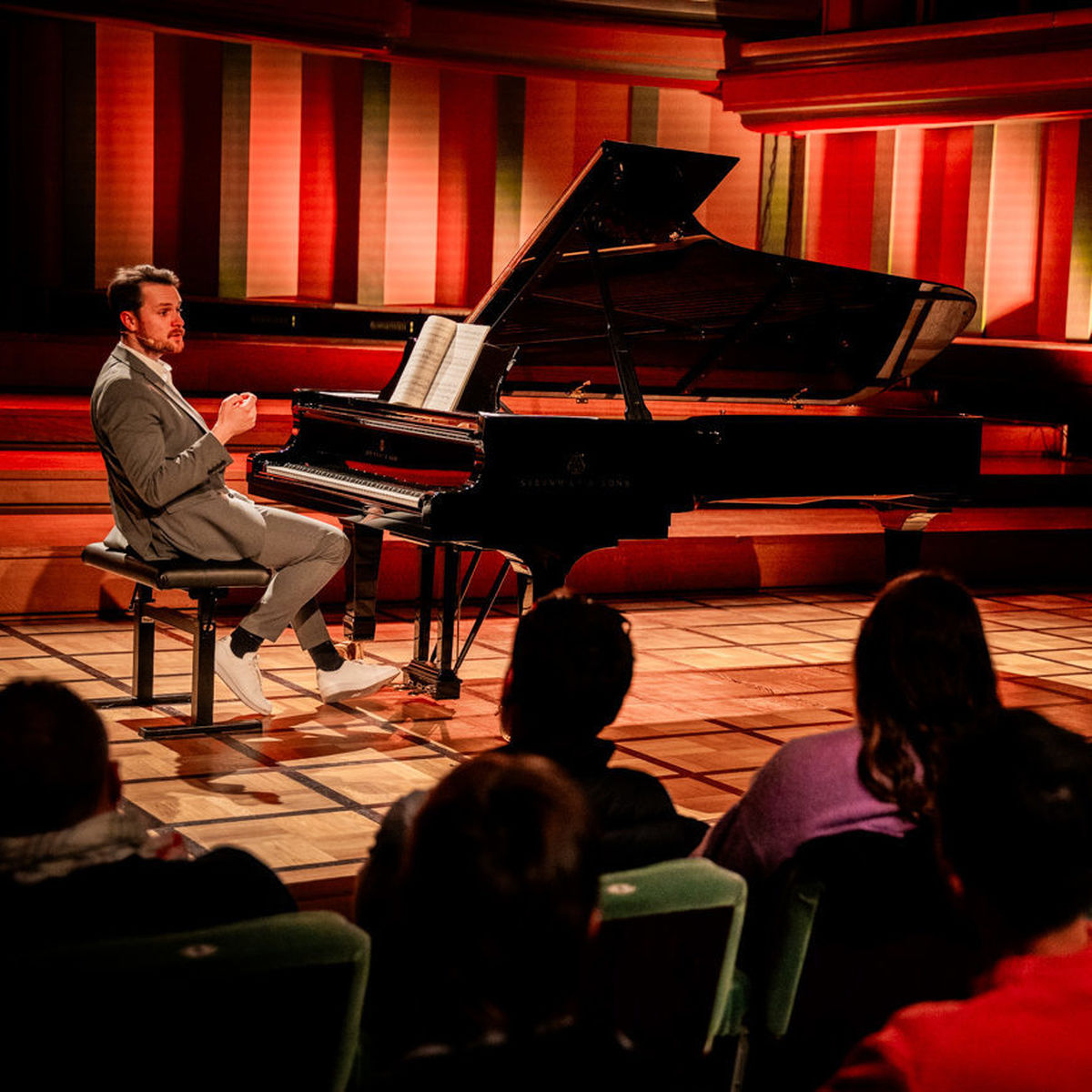
Ligeti <> Bartók · 26.04.2024 · Flagey
Traditional folk melodies, intricate rhythms, and innovative techniques form a rich musical foundation shared by the grandmasters Béla Bartók and György Ligeti.
In various articles and interviews, György Ligeti often returned to a dream from his childhood:
'In my early childhood, I once dreamed that I could not get into my bed (a bed that was considered a safe haven due to the frame around it) because the whole room was covered with a thin-fibred but dense and extremely tangled tissue, similar to the secretions of the silkworm. Along with me, other creatures and objects became entangled in the vast network too: moths and beetles and all sorts of insects trying to reach the light space of a few scantily burning candles – large, damp, dirty cushions, the dirty fillings of which seeped out through cracks in the upholstery, lumps of snot, cold food scraps, and similar clutter. Each movement of the trapped beings caused a vibration that transmitted itself to the entire system, so that the heavy cushions continued to shake back and forth and in turn rippled the whole thing again. From time to time, the mutual movements became so powerful that the net tore in some places and some beetles unexpectedly loosened, only to lose themselves again in the swelling web with a suffocating hum. The changes in the system were irreversible – no state from the past could return.’
Sometimes a whole human life is contained in a childhood dream – especially if you think about the biography of the adult Ligeti. And this dream gives us another important key to a deeper understanding of his multi-layered music.
Psychologists rightly claim that extremely creative people have a rich illusionary, fantastical and imaginary imagination. Ligeti is a textbook example: as a young man, he invented an imaginary empire ‘Kilviria’ and provided it with an extremely detailed geology, topography and language. For a while there was even talk of an opera ‘Kilviria‘, to be sung in this imaginary language.
He calls the language of his Piano Concerto his aesthetic credo. Many spheres of influence merge here in a complex fabric: medieval isorhythm, Stravinsky, Shostakovich, Liszt, Conlon Nancarrow, Oscar Peterson, African polyphony, Eastern European folk music, Salsa and Samba, Paul Klee, Paul Cézanne, Constantin Brancusi, etcetera ... The imaginary ethnological musical landscape that Ligeti envisioned would lie somewhere between Africa, the Balkans and the Caribbean…
Welcome to this five-part Kilviria!
Jan Michiels
CONDUCTOR Kazushi Ono
PIANO Jan Michiels
--
Béla Bartók Dance Suite, Sz. 77, BB 86a (1923)
György Ligeti Concerto for Piano and Orchestra (1988)
Béla Bartók Concerto for Orchestra, Sz. 116, BB 123 (1943)
--
26.04.2024 FLAGEY
27.04.2024 DE BIJLOKE GENT

Traditional folk melodies, intricate rhythms, and innovative techniques form a rich musical foundation shared by the grandmasters Béla Bartók and György Ligeti.

Pianist Florestan Bataillie unravels all the secrets of György Ligeti's unique piano concerto during this musical lecture. Explore the historical backdrop, unravel the construction nuances of this masterpiece, and demystify terms such as polymetrics and 'aksak.'
Whether you're a seasoned connoisseur or simply curious, all are invited, and prior knowledge is not a prerequisite!